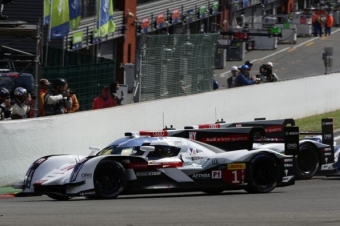Bi-directional data transmission is prohibited. Data may be transmitted from the car to the pits, but not vice versa. Radio communications with the race driver in the car are the only possibility which the team has to influence the car. If there is a need for action based on the engineers’ data analysis this information – such as brake balance, engine control or hybrid system settings – is communicated to the driver by radio. If necessary, alternative program versions stored in the car may be used.
In addition, there is a telemetry system for the officials of the FIA (Fédération Internationale de l’Automobile), which together with the ACO (Automobile Club de l’Ouest) monitors compliance with the regulations: Is the hybrid system within the prescribed amounts of energy? Is the energy consumption of the race car within the prescribed range? Are the boost pressure parameters correct? Does the cockpit temperature remain within the permissible limits?
In addition, the FIA uses a GPS system. This year, the FIA has begun to use this system for measuring whether or not a race driver complies with the speed limit in critical situations, such as caution periods at the scene of an accident. Activities of the marshals (in marshaling areas to secure accident scenes, for example) are also displayed in the cockpit. This provides the driver with assistance that enhances the safety of all the participants. Furthermore, the position of the race car can be tracked on a map of the circuit in real time. Consequently, a modern LMP1 race car is constantly and comprehensively connected with the team and with race control.
Photo: Audi
(May 5, 2014)

